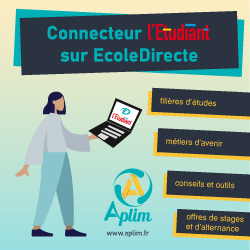
Why doesn’t the CNED come up more often in discussions on digital technology and EdTech in France ?
We have a quiet presence for our size. In the European distance-learning industry, the CNED is the biggest player in terms of volume. We constantly use digital tools to both teach and design our courses and run our organization.

Do you build your own tools ?
No. The tools we buy must be compatible with 240,000 students of varying ages and education levels. There aren’t that many companies that offer paperless services for 1.5 million assignments per year.
Given its size, the CNED must interest many businesses.
Yes, we appeal to companies that could develop products for us that they can sell elsewhere too. Small startups and industry giants alike contact us frequently.
Do you outsource your data management ?
The data we store is highly sensitive so that is something we do not outsource.
How do you adapt content to such a large, diverse group of students ?
We use students’ digital paper trails to prevent dropouts and foster success. We analyze the exercises with the highest fail rates. Our alert systems help teachers intervene quickly when students are struggling. We can also identify the part of the curriculum that 70,000 students had trouble understanding.
Have you encountered any data-related difficulties specific to the CNED ?
Extensive research is done on students’ digital paper trails but most of it focuses on classroom learning. Modeling doesn’t exist yet for distance learning. In 2018, we are going to work with a French research lab to determine which data to analyze.
Why not switch to 100 % online education ?
Our experiment in middle schools was very instructive. We went with a mostly digital format. Students wanted fewer interactive online courses and more work on paper. Given that generation’s familiarity with devices, you might think those students would love to go 100 % digital. That’s not true, at least not for long, complicated learning processes. You can’t spend seven hours a day behind a screen. It sounds obvious when you say it : 100 % digital just does not work.






